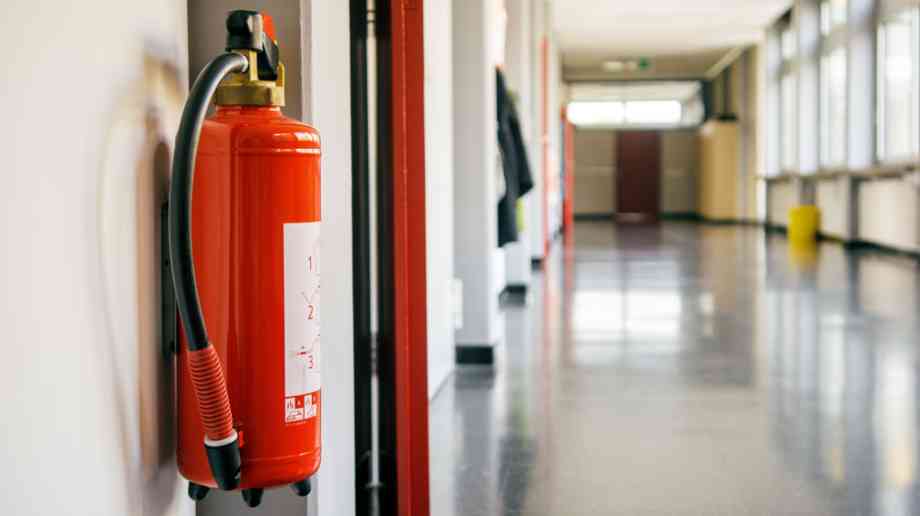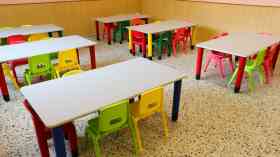
Fire safety in schools
Understanding the UK requirements for fire safety in schools can be challenging. Will Lloyd and Neil Budd, technical managers at the Fire Industry Association, explains what schools need to know
There are over 32,000 schools throughout the UK. Analysis of Home Office data by leading insurer Zurich Municipal shows that in the period from 2015 to 2020, schools in England had experienced 2,300 fires of which 47 school buildings were destroyed. This has a significant impact on not only the local community, but also individual pupils. Keeping both teachers, pupils, and the school buildings safe from fire is of utmost importance.
Requirements
Understanding the UK requirements for fire safety in schools can be challenging. Fire safety starts with the design of the building and Building Bulletin 100: Design for fire safety in schools (BB 100) is the starting point, alongside Approved Document B (ADB) volume 2, to establish a good foundation of fire safety.
BB 100 was recently the subject of a government consultation to seek views on a revised version. Some of the questions asked during the consultation included: views on which fire suppression systems (including sprinkler, misting systems etc.) are most effective in a school environment; whether BB 100 should include advice on specific property protection measures; and whether BB 100 should provide greater guidance on meeting fire safety management long-term, to support users to meet the requirements of the Regulatory Reform (Fire Safety) Order 2005.
The consultation on the new revision of BB 100 closed on the 18th of August 2021. The Government has issued a response to the consultation, but the revised guidance has yet to be published.
Approved Document part B is the baseline guidance for fire safety in buildings, and the recommendations of part B will typically be satisfied where the life safety guidance of BB 100 is followed.
Fire doors
One key fire safety element of the building’s construction is the presence of fire doors. Fire doors are used to prevent fire and smoke from spreading to protected routes i.e. protected corridors and stairways. They can also be used to restrict disproportionate damage to the school, as a result of a fire by acting as means of compartmentation, thus limiting the spread of a fire. Therefore, it is fundamental that these vital fire safety measures are subject to a suitable system of inspection and maintenance, as required by the Regulatory Reform (Fire Safety) Order 2005.
As fire doors are one of the key elements of fire safety in a school (and other buildings), it is essential that where they need to be held open, in order to allow the free movement of students, teachers and visitors around the school, they are not “wedged” open, but rather a suitable alternative method is adopted. This could be in the form of electronic hold-open devices that are linked to the automatic fire detection and fire alarm system so that they release upon detection of fire. BS 7273-4 is the appropriate British Standard for the interconnection of a fire detection and fire alarm systems and electronic hold-open devices, and anyone employed to install and maintain these devices should be competent. One of the easiest ways of ensuring competence is by the use of third-party certified companies.
Many schools, for security purposes, will implement an access control system to restrict access to authorised people. Where these systems are adopted on doors that form part of the means of escape, under BS 7273-4, BB 100 and Approved Document B, these doors should release upon detection of a fire.
Raising the alarm
All schools should have suitable arrangements for raising the alarm to warn occupants in the event of a fire. A fire detection and fire alarm system, installed to BS 5839-1 by a third-party certified company, provides confidence that a fire situation will be detected at the appropriate time to allow sufficient opportunity for evacuation of all persons from the affected building(s). The size and complexity of the fire detection and fire alarm system will be proportionate to the size and complexity of the school. For example, a small school on one storey with no more than 160 pupils may only require a manual system with no automatic detection. Whereas a large multi-storey school with multiple buildings may require automatic detection throughout the buildings and possibly the installation of a voice alarm system complying with BS 5839-8, which may also incorporate a public address system, which will provide both an audible signal and verbal instructions in case of fire.
Many schools are implementing a means to warn occupants of a security situation within the school grounds, whereby there is a need to keep students within designated areas in the building. This is commonly known as lockdown and more recently known as invacuation. The FIA has produced a guidance note on these systems1.
With increased awareness of people with sensory sensitivities, the FIA created a Special Interest Group (SIG) to discuss the needs of those people who may not react in the manner that the specifiers and designers of the fire detection and fire alarm system may expect. The guidance document2 that the FIA have subsequently published is intended to highlight the issue and provide guidance, not only for schools, but for the wider fire safety community.
Dual approach
With arson (wilful fire raising) being one of the main causes of fire in education establishments, the need to not only protect people’s lives in the school, but also the need to protect property (e.g. the IT equipment, education resources and the buildings themselves) leads to a dual approach to tailor the fire safety measures to the location, use and risks identified. The use of sprinklers for property protection is one of the main mitigating factors that can be implemented within a new school building, and even installed retrospectively to existing buildings to protect the property. A fire detection and fire alarm system which satisfies both the property protection objective and the life safety objective, and which includes automatic transmission of alarm signals to a monitored alarm receiving centre (ARC) to summon the fire and rescue service, will assist in early attendance without the need for a telephone call. It is advised that where possible, an automatic signal to the ARC is backed up by a telephone call to the fire and rescue service to provide confirmation of a real fire event. The ARC connection is particularly important with regards to property protection at night when the school is not occupied. The fire detection and fire alarm system needs to be designed and maintained to ensure that false alarms do not occur, however in practice, this is extremely difficult. Schools may be subject to malicious false alarms and a badly designed system could lead to false alarms from environmental influences. These create disruption to the school day, and where the fire and rescue service attends, wastes valuable time and could be taking resources away from a real fire situation elsewhere. The
FIA has further guidance on how Premises Management can help to limit false alarms in their buildings https://www.fia.uk.com/cut-false-alarm-costs.html.
The FIA will be holding a series of regional events in 2023 with a specific focus on fire safety in schools. Signing up to the FIA email newsletter will keep you informed of all the events FIA taking place.
FIA guidance note: Use of fire alarm systems for lockdown (specifically in schools)
FIA guidance document: Fire alarm considerations for people with sensory sensitivities
Latest News
19/12/2025 - 09:54
The Education Committee has expanded its ongoing inquiry into the early years sector to examine how safeguarding can be strengthened in early years settings.
18/12/2025 - 09:25
The UK will be rejoining the Erasmus programme in 2027, following a package of agreements with the EU.
17/12/2025 - 09:31
Ofqual has fined exam board Pearson more than £2 million in total for serious breaches in three separate cases between 2019 and 2023 which collectively affected tens of thousands of students.
16/12/2025 - 09:19
The average funding rates will increase by 4.3% for under 2s, and by almost 5% for 3-and-4-year-olds.
15/12/2025 - 10:30
Local colleges are set to receive £570 million in government funding to expand training facilities in areas such as construction and engineering.







